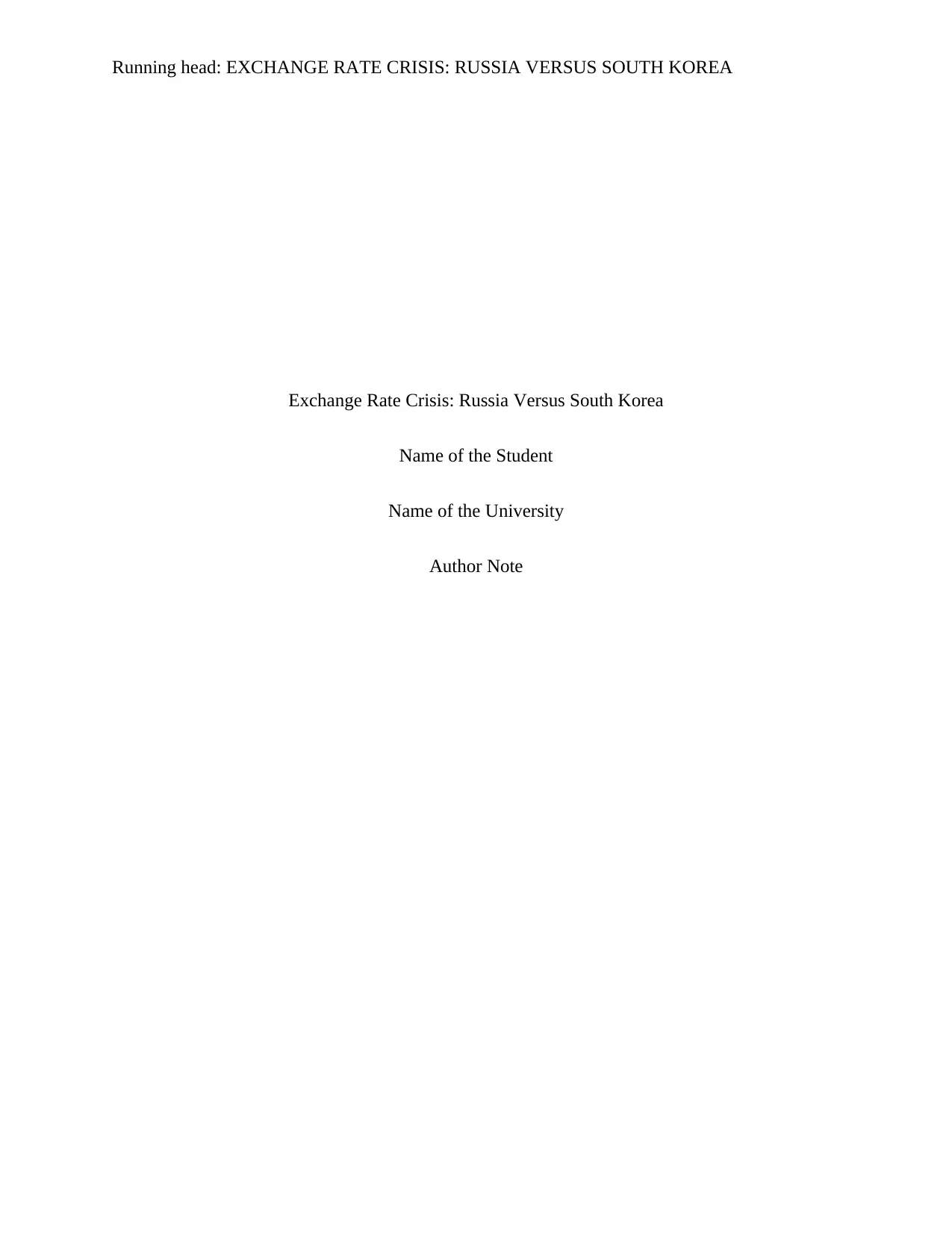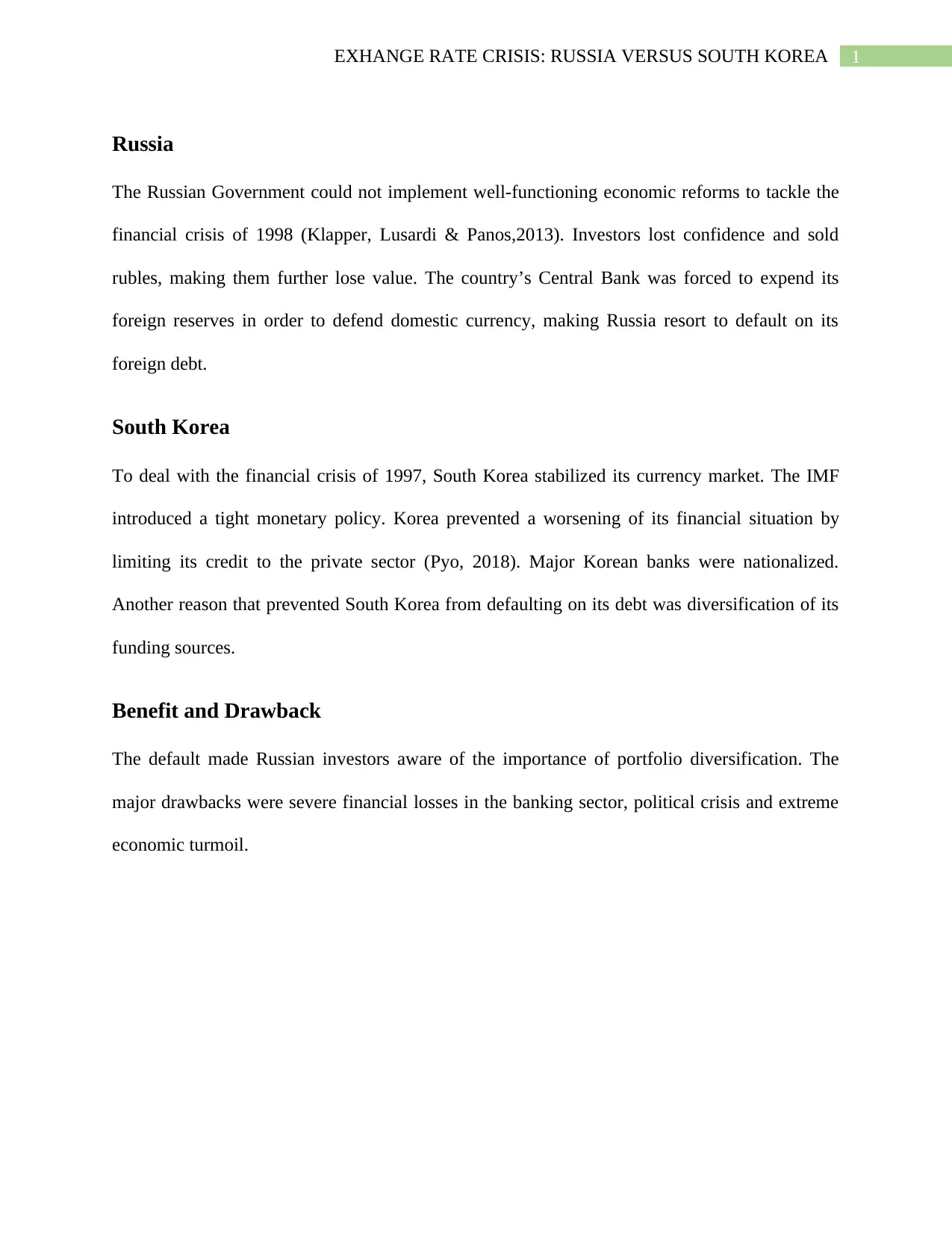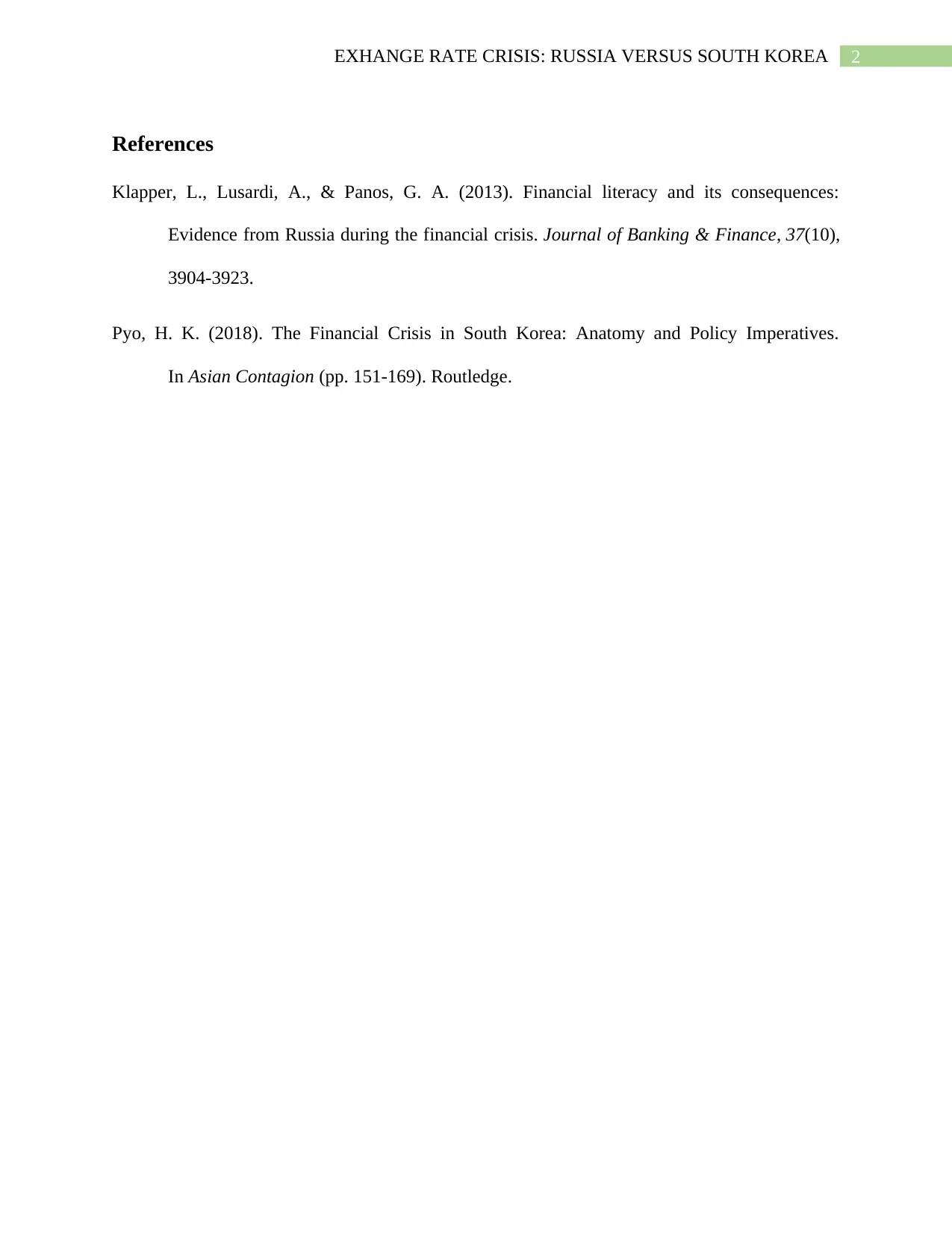EXHANGE RATE CRISIS: RUSSIA VERSUS SOUTH KOREA.
VerifiedAdded on 2022/11/26
|3
|299
|71
AI Summary
Russia and South Korea experienced exchange rate crises in the late 1990s, but their response was markedly different. First, Russia experienced a dramatic decrease in the value of the Russian ruble relative to the U.S. dollar in 1998. The Russian government responded by suspending payments on foreign debt. Similarly, South Korea experienced a decrease in the value of the won in 1997. In contrast, South Korea did not default on its debt.
Why might these two countries have behaved differently in response to their respective crises? What are the benefits of default? What are the drawbacks?
Contribute Materials
Your contribution can guide someone’s learning journey. Share your
documents today.
1 out of 3








![[object Object]](/_next/static/media/star-bottom.7253800d.svg)